- Home
- Products
- Aircraft Tires
- Products
- RRR (Revolutionarily Reinforced Radial)

How did Bridgestone successfully develop its new technology radial tire:
Revolutionarily Reinforced Radial (RRR) ?
Prologue
A Concorde supersonic passenger aircraft ran over a piece of metal on takeoff at Charles de Gaulle Airport in July 2000. The impact was sufficient to burst the tires, sending rubber debris into the fuel tanks causing them to rupture, resulting in an engine fire, and ultimately the crash which claimed the lives of all 109 aboard and 4 on the ground. An investigation led to the conclusion the Concorde's tires hit a titanium wear strip which had fallen from an earlier plane on to the runway surface.
The Concorde tragedy prompted aircraft manufacturers towards greater focus on tire safety, and Bridgestone responded with technology designed to improve tire durability. The goal was to provide improved casing integrity which minimizes the likelihood of scattering tire fragments after foreign object damage, and we named the technology RRR.
Normal operating conditions for aircraft tires can include external damage, often the result of hitting runway debris. The possibility cannot be eliminated.
Aircraft tires must operate at very high loads and with high pressure, and accordingly are manufactured to be extremely strong. Their considerable casing strength allows the use of high inflation pressures, up to 6-7 times that of car tires and almost doubles that of truck/bus tires. This high pressure makes aircraft tires prone to tire growth whereby tread rubber expands, making the tire more prone to damage (cutting, scarring, wearing, etc.).
Bridgestone's objective was to develop a construction design which would allow for high inflation pressure, but also provide a resilient tread surface. To clear this technical hurdle, Bridgestone engineers reached the solution to decrease the tension of the tire's rubber surface, in a sense relaxing the tread area.
Quest for New Tire Construction
In analyzing past technological findings, it became clear restraining tire growth, particularly at the center, was the key to enhance high-speed operability and durability. Bridgestone engineers then went to work, continually refining prototype designs, utilizing the FEM (Finite Element Method) in both tire construction and in materials. This enthusiastic and comprehensive research gradually paved the way towards RRR tire construction which features a new belt structure which consists of high modulus cords for superior tire performance.
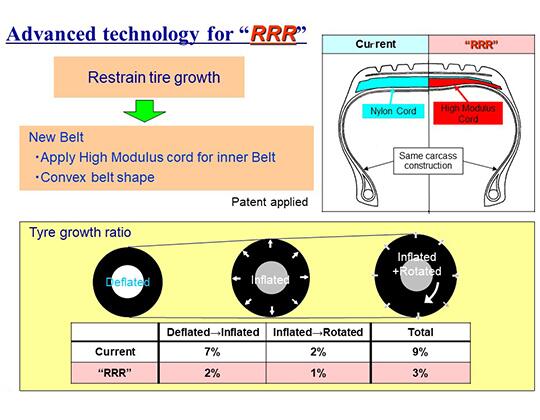
RRR Tire Performance
1. Superior Safety
Not every cut leads to immediate or even eventual tire failure. However, there are two basic "worst case scenario" when an aircraft tire hits a foreign object.
- The tire bursts if the foreign object penetrates through the tread into or through the casing.
- The tire tread peels off if the cut damage is limited to the tread area.
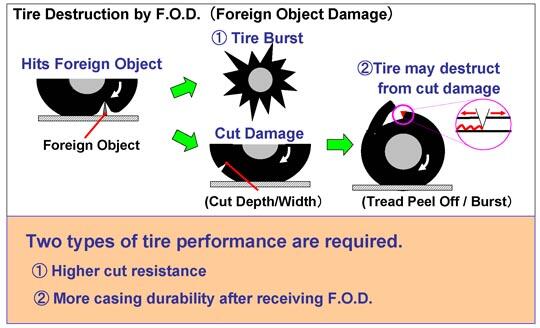
To minimize the occurrence of these two types of tire destruction, Bridgestone focused on:
- enhancing cut resistance by lowering tension of the tire tread
- separating the inner and outer belt functions, allowing the inner belt to bear tension in order to reduce tension on the outer belt, thus enabling the outer belt to function as a cut protector against external damage.
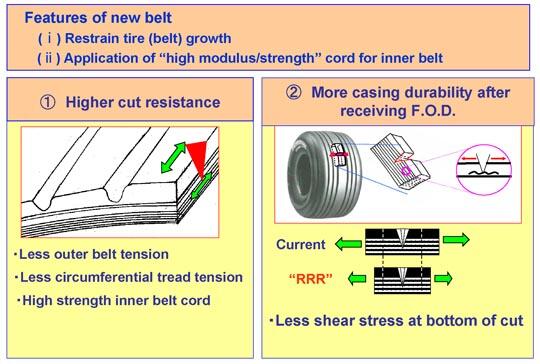
2. More Economical
Bridgestone's RRR tire construction technology offers two additional benefits:
- Less Weight
- A reduction in belt weight as a result of a more optimum construction and shape in addition to the application of superior materials.
- A reduction in carcass weight as a result of rigid belt construction which enables to reduce carcass tension, allowing for a reduction in materials.
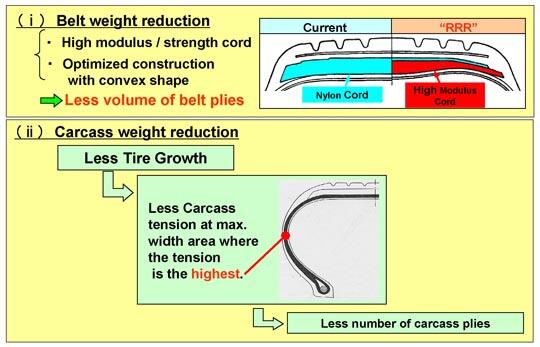
- More Landing Cycles (Improved Tire Wear)
- Improved wear resistance due to a reduction in tension on the tread surface.
- Less weight (i.e. reduced tire inertia) benefits in reduced tire slippage at landing.
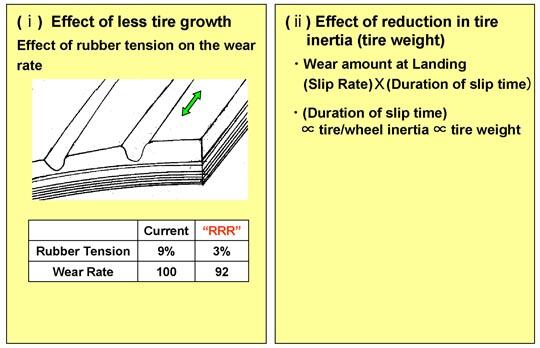
Epilogue
- Bridgestone has successfully developed its new technology radial tire "RRR".
- "RRR" superior performances;
- Safety
Higher cut resistance
More casing durability after received F.O.D. - Economy
Less Weight
More Landing Cycles
- Safety
- The "RRR" is selected by Airbus and Boeing as OE tires for newly coming aircrafts.
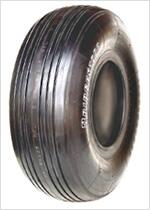
RRR Tire for A380-800 Main Landing Gear
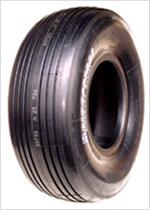
RRR Tire for B787-8 Main Landing Gear

